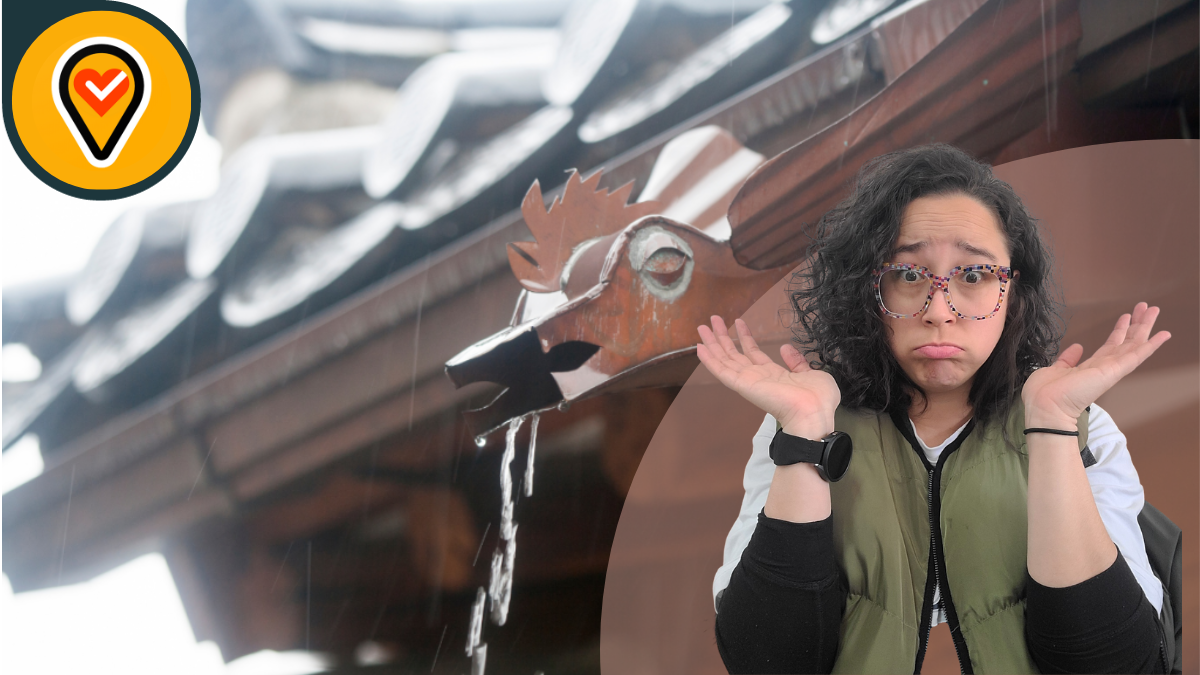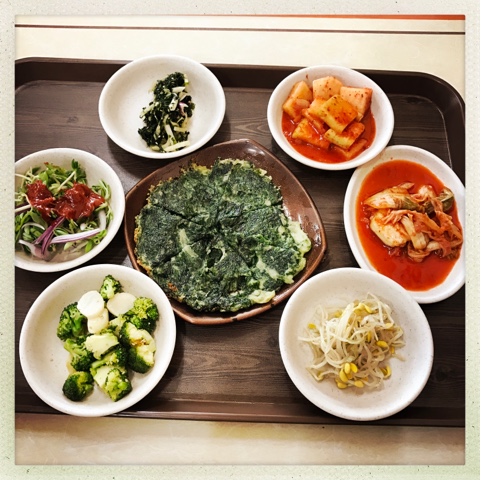
Understanding Monsoon Season (Jangma) in South Korea
Are you ready for the rainy season in South Korea? This post shares a deep dive into what you need to know about this potentially dangerous time of year.
Listen to the BlogCast
Don’t want to read? Listen to the South of Seoul BlogCast which provides accessible content through the use of AI technology. We don’t have time to read each article but we do our best to make more of our content accessible. If you would like to join our Accessibility Team apply to volunteer with South of Seoul. Please note that the pronunciation of some Korean words may be inaccurate due to AI technology’s limitations.
When is monsoon season in Korea?
The exact dates of the monsoon season are not fixed. That is because nature makes its own decisions and we just have to live with them. Usually, Jangma (monsoon season) begins in June or early July and lasts 2-6 weeks. Follow the English-language newspapers to learn about the monsoon season and stay current on updates.
What happens during Jangma (monsoon season)?
Generally, the monsoon season brings a great deal of rain and wind. More rain than you may have ever experienced before depending on where you are from and how bad the monsoons become during the season. Monsoon weather may arrive suddenly and leave suddenly so you need to always be prepared. You can be dry one second and entirely soaked the next. Umbrellas often self-destruct in a moment when the winds and rain arrive but keep as many around as possible.
The news is going to look something like this:
What are the dangers of Jangma in rural area of Korea?
There are some things you need to be very aware of during heavy rains or potential heavy rains. If you live in the farming areas of Korea or next to a river, there are some things you need to know when the rains come:
- Rivers can swell and become deadly in a moment. Stay away from river paths on days there might be rain.
- Don’t drive through puddles if you aren’t familiar with the area. If the puddle is clearly deep, rethink your path and try another option.
- Drive carefully on country roads without edges as erosion can cause them to collapse. Be allert in agregucltural areas.
- Hydroplaning is an issue. Do NOT drive fast in heavy rains. Slow down and take your time.
- While driving, be aware of how your car is throwing water when passing other cars and pedestrians. Slow down and make sure not to run them off the road on accident.
- Bridges are known to wash out so keep your eye on that. If the bridge looks sketchy, go a different way.
- If you are in a low area, your car might need to be parked in a higher area overnight. DO NOT ENTER UNDERGROUND GARAGES DURING FLOODING.
- Basements and first floors in low areas often flood. Keep anything you care about up off the ground.
- Everything may start to leak. Cement buildings can become bitter and waterlogged. If you have ever lived in high rain areas you know that everything starts to leak eventually. Keep an eye on windows, ceilings, etc. CALL your landlord IMMEDIATELY if you see signs of water damage.
- Hiking and biking can be VERY dangerous. We still hike and bike in this season but we avoid valleys, rivers, and anywhere that can flash flood. Be alert to rising water at all times!
- Avoid construction sites and unsecured items. The winds will rip off tree branches, signs, stoplights, and more. Stay aware of your surroundings in the high wind. If you can, just stay inside.
- Food delivery may be interrupted. When things get unsafe companies will suspend deliveries. Keep food on hand at home.
If you stay aware of the dangers you will be just fine, it’s not knowing about the issues that can cause a problem. Read these additional resources regarding jangma:
- Fun in Cheonan: Bracing for the Korean Rainy Season
- Embracing Monsoon Season in Korea
- 10 Mag: 4 Ways to Survive Monsoon Season
When does Jangma end each year?
Nobody knows for sure, because…. nature. Just go with it. Don’t plan anything that can’t handle a lot of rain during the month of July. Random info, jangma is actually one of the main reasons the Korean swimming season doesn’t start until late July / August. The official Korean swimming season starts after the rains end.
What tips are there for managing Jangma?
We find that accessing our best problem-solving skills, adjusting our plans, and asking for help are the three things that improve our resilience when the rains come. Additionally, here are some specific things we do to make sure that monsoon season is a pretty mellow ride. Here are some (but not all) of the things we do to make life smoother during the rain:
- When choosing a place to live, avoid places near bodies of water and in low-lying areas. Rural farming areas near rivers often flood like CRAZY. Also, avoid the first floor if it’s not elevated.
- Secure your outdoor areas. Secure the things on your porch or in your yards so the winds can’t take them through a window or blow them away.
- Keep your dehumidifier running. The 제습 mode om 24 on your AC is your best friend during the rainy season. It will keep down the mold and cool your house.
- Keep drinking water in the house. The water system can get messy during floods so keep water on hand.
- Make sure anything you can’t lose is in a waterproof box.
- Buy good rain gear.
- Keep extra clothes in the car for the family (especially the kids) in case you get drenched.
- Buy waterproof shoes/boots. We embrace cute rain boots!
- Buy water shoes. We actually get shoes designed for hiking and getting wet. Instead of trying to stay dry, we wear footwear that still functions totally soaked. This works way better on scooters since all the water just runs into your shoes anyway.
- Buy moister absorbers. There are many different things you can buy at stores to stick in your shoe cabinet, closet, and sofas to absorb the dampness. Go buy a bunch of these things and use them.
- Keep towels by the front door. Be ready to dry off as you come in the house!
How Dangerous is Jangma (monsoon season)?
Somewhere between not at all exciting and potentially deadly. If you take precautions, and consider your housing, commute, and parking situation carefully you are likely to only be annoyed by the rain. Nothing dramatic or tragic will happen. However, if you get caught in an area that’s getting hit with flash floods, collapsing hillsides, caving roads, etc – it’s obviously VERY dangerous and you need to get serious about things.
Basically, stay alert to areas that are flooding and know your surroundings. This can be done, in part, by downloading the 1330 app which will give you emergency advisories in English. Keep an eye on rivers near your home and know your evacuation paths and have an evacuation plan. Stay aware and stay safe. Your choices go far in making jangma simply a rainy time of year. (Basically, don’t go near rivers and don’t hike in valleys and ravens in high rain! Seriously, don’t be that person.)
Remember, just because it’s wet and dangerous doesn’t mean you have to be miserable. Awareness of danger doesn’t equal danger. Living in fear is no way to get through jangma (monsoon season) in the Korean countryside. You aren’t in immediate danger every moment of every day. Just know danger could exist, keep on top of information, and make your choices accordingly.
We don’t recommend fixating on the news. Simply stay current when making plans. In 2021, this is the current jangma situation as of today:
Does Jangma Suck?
Should I clear my schedule to hide at home and complain about it online?
We think jangma has a unique charm that we appreciate and kind of look forward to each year. However, if you have a low tolerance for discomfort or your house gets flooded, you will likely hate it. The reason we don’t hate our lives during jamgma is that it creates a cozy summer season. A time when we can sit in cafes next to the sea or in the city and listen to the rainfall. We laugh about getting caught in the rain, strategize how to stay “dry” on our scooters, read books, hang out in comic book cafes, meet friends at board game cafes, hang out in arcades, go to museums, shop at markets, and play in the rain when we can. It’s basically summer family and project time.
Additionally, we have been here for over a decade so we have refined our coping skills each year and found a rhythm that works for us. Keep in mind, your first monsoon season may be highly unpleasant since you may not be used to dealing with it yet.
Deciding to be passively, miserable during monsoon season is a personal choice that could be the right choice for you. Sometimes we need to feel our discomfort and express it. We all have different needs in the middle of culture shock and your need might be to complain and feel isolated. Each of us has different cultural views of what constitutes discomfort and misery and you know what you need. Rainy days aren’t a big deal for my household but they might be a deal-breaker for you. None of this is written to be mocking, mental health is different for everyone. Embrace what’s right for you. Own it.
We hope that this blog will help you find your happy place in the rainy season or embrace your misery with like-minded folks. We hope you safely explore and enjoy the unique beauty of the monsoon season, even if the beauty is feeling melancholy. As my mom used to say, “Sadness is something we all need to feel sometimes.”

Lanae Rivers-Woods moved to Korea in 2011 where she lives in the countryside with her family, friends, and puppies. She holds a BSSW (Bachelor’s of Science in Social Work), a MAIT (Master’s of Arts in International Teaching), and registered by the Pyeongtaek Korean Times with the Korean government as a Cultural Expert.
Ms. Rivers-Woods used her 15 years experience as a social architect, UX/UI designer, and technology consultant to found South of Seoul in 2015. South of Seoul is a volunteer organization that leverages technological tools to mitigate cultural dissonance in multi-cultural communities.
Through South of Seoul, Ms. Rivers-Woods works with independent volunteers, non-profit organizations, businesses, local & federal government, universities, and US military organizations to develop solutions to support English speaking international residents in rural South Korea.
Additionally, Ms. Rivers-Woods founded the South of Seoul smart phone app available for Google Play and iPhone. The app provides information a resources for those living and traveling in South Korea.
When she isn’t in South of Seoul development meetings or working her day job, Ms. Rivers-Woods loves to be outside at skate parks, the beach, or playing in the mountains.





